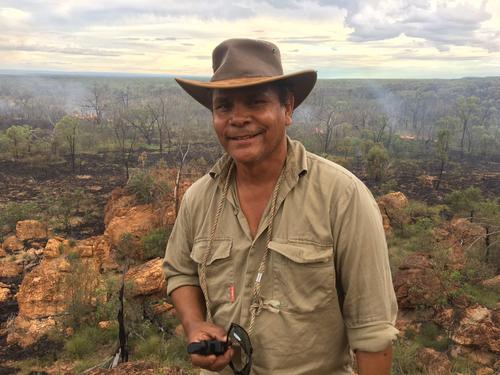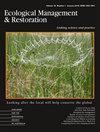与格里·特平一起畅谈——关于土著生物文化知识的访谈
IF 2.2
4区 环境科学与生态学
Q3 ECOLOGY
引用次数: 1
摘要
土著居民的谈话通常是在篝火旁进行的,所以我们可以坐下来,不仅沉浸在谈话中,还可以与乡村建立联系。编织的行为是建立和建立相互尊重的关系、交流故事和传统以及保存和传承文化知识的媒介。这次对民族植物学家格里·特平(图1)的采访,就像所有其他关于我们是谁、我们属于哪里的谈话一样,开始了。本文章由计算机程序翻译,如有差异,请以英文原文为准。

Yarning up with Gerry Turpin – An Interview about Indigenous biocultural knowledges
Aboriginal conversations usually take place around a fire, so that we can sit and immerse ourselves not only through talk but connect with Country. The act of yarning serves as a medium to establish and build respectful relationships, exchange stories and traditions and to preserve and pass on cultural knowledge. This interview with Ethnobotanist Gerry Turpin (Fig. 1) began like all other initial yarning conversations on who we are and where we belong.
求助全文
通过发布文献求助,成功后即可免费获取论文全文。
去求助
来源期刊

Ecological Management & Restoration
Environmental Science-Management, Monitoring, Policy and Law
CiteScore
4.20
自引率
0.00%
发文量
0
期刊介绍:
Ecological Management & Restoration is a peer-reviewed journal with the dual aims of (i) reporting the latest science to assist ecologically appropriate management and restoration actions and (ii) providing a forum for reporting on these actions. Guided by an editorial board made up of researchers and practitioners, EMR seeks features, topical opinion pieces, research reports, short notes and project summaries applicable to Australasian ecosystems to encourage more regionally-appropriate management. Where relevant, contributions should draw on international science and practice and highlight any relevance to the global challenge of integrating biodiversity conservation in a rapidly changing world.
Topic areas:
Improved management and restoration of plant communities, fauna and habitat; coastal, marine and riparian zones; restoration ethics and philosophy; planning; monitoring and assessment; policy and legislation; landscape pattern and design; integrated ecosystems management; socio-economic issues and solutions; techniques and methodology; threatened species; genetic issues; indigenous land management; weeds and feral animal control; landscape arts and aesthetics; education and communication; community involvement.
 求助内容:
求助内容: 应助结果提醒方式:
应助结果提醒方式:


